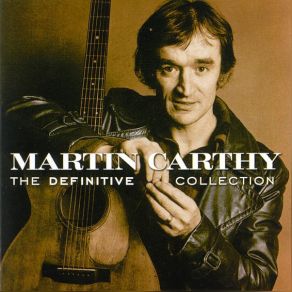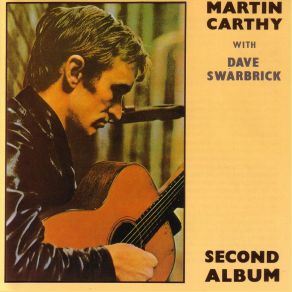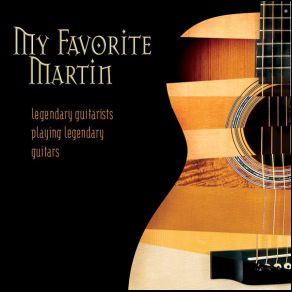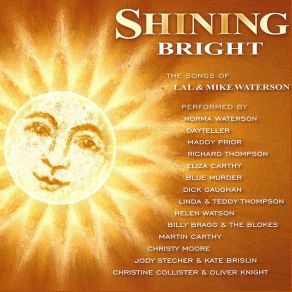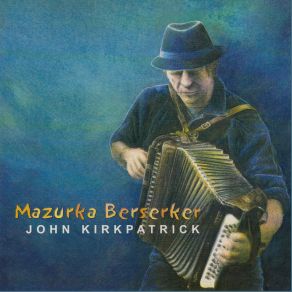Martin Carthy
Wikimp3 information about the music of Martin Carthy. On our website we have 44 albums and 32 collections of artist Martin Carthy. You can find useful information and download songs of this artist. We also know that Martin Carthy represents Songwriter/Lyricist genres.
Biography
[Edit]If the English folk revival of the 1960s had a single "father" and guiding spirit, then Martin Carthy was it. Carthy's influence transcends his abilities, formidable though those are — apart from being one of the most talented acoustic guitarists, mandolinists, and general multi-instrumentalists working the folk clubs in the 1960s, he was also a powerful singer with no pretensions or affectations, and was an even more prodigious arranger and editor, with an excellent ear for traditional compositions. In particular, he was as much a scholar as a performer, and frequently went back to the notes and notebooks of folk song collectors such as Percy Grainger, scouring them for fragments that could be made whole in performance — no "second hander," he used the earliest known transcriptions and recordings of many of the oldest folk songs known in England as his source, and worked from there. By 1966, at the time he was cutting his first two albums, Carthy was already an influence on Bob Dylan and Paul Simon, and by the end of the 1960s was de facto mentor to virtually every serious aspiring folk musician in England. At least three major English folk-rock bands, Fairport Convention, Steeleye Span, and the Albion Band, were formed either directly or indirectly with his help and influence.
Surprisingly given his musical prowess, Carthy didn't initially set out to be a musician. Upon leaving school, he served as an assistant stage manager for different theatrical companies, and only gradually drifted into performing in the coffeehouses springing up around London during the late '50s and early '60s, as skiffle, with its heavy American influence, was supplanted by more specifically British material. He joined Redd Sullivan, Marion Gray, and Pete Maynard in a group called the Thameside Four, and sang with them for three years, until his reputation had grown sufficiently, and the demand from the clubs in London was such that he began making solo appearances. He became the resident singer at a folk club called the Troubadour in London, and during that time he recorded a four-song extended-play single for Topic Records that got lost somewhere between the studio and the pressing plant.
Still, he had an audience, and among those listening was a pair of Americans who happened to be in England at the time. One who heard Carthy perform his arrangement of the traditional song "Scarborough Fair" was Paul Simon, who was trying for a folksinging career in London following the failure of the very first Simon & Garfunkel album (Wednesday Morning, 3 AM) back in America. Carthy gave Simon his arrangement, chords, and words for the song, and it became the basis for Simon's own version when he returned to the United States. Another American working around London in 1965 was Bob Dylan, in London appearing in a television play called Madhouse on Castle Street (wherein a teenager named Duncan Brown heard his guitar playing and decided to become a musician, recording one classic '60s album). Dylan heard Carthy's version of "Lord Franklin" and transformed the melody into "Bob Dylan's Dream" for the album Freewheelin', which also mentions Carthy in the liner notes.
Carthy made his recording debut on the English Decca anthology album Hootenanny, but neither song was really representative of Carthy's work. "My Baby Has Gorn Dahn the Plug 'Ole" and "The End of My Old Cigar" provided what he later referred to as comic relief amid the earnestness of the rest of the compilation. His big influences, in addition to the expected folk song collectors and arrangers such as A.L. Lloyd, included Ravi Shankar (Carthy had attended the latter's first London performance in 1957) and Davy Graham, whose version of "She Moved Through the Fair" encouraged his interest in Indian music. By the mid-'60s, Carthy was a musical polymath, drawing inspiration from music all over the map, although his repertoire came entirely from the British Isles.
In 1965, Carthy was signed to Fontana Records and recorded his debut album, Martin Carthy, that same year, which contained his arrangement of "Scarborough Fair" and featured contributions from fiddler Dave Swarbrick as a performer and co-arranger. From the very first, Carthy's records became songbooks for thousands of lesser performers and less ambitious would-be folk musicians — he literally was the Bob Dylan of the English folk revival, without the feigned anger or the affectations, but with all of the skill and depth. That first album was also the first manifestation of what eventually became a more formal partnership with Swarbrick. That didn't begin, however, until March of 1966, when the violinist found himself turned back by Dutch customs officials while traveling to Denmark — Carthy offered to team up with Swarbrick on an upcoming tour with a 50/50 split of the proceeds. Their recording situation was more complicated, due to the fact that Carthy was signed to Fontana as a solo artist, and the record company wouldn't modify the contract — they were never able to split the revenues of their recordings during the 1960s, a situation that never hurt their working relationship. The two ended up recording six long-players and an extended-play single between 1966 and 1969 (at around that time, Swarbrick went off to join Fairport Convention). Their records, all carefully programmed and recorded (each new song was a surprise: a solo number by Carthy might be followed by a work featuring the two of them, followed by an a cappella number by Carthy), sold well among folk enthusiasts, and put both Carthy and Swarbrick on the map nationally.
Carthy became not only one of the most popular folksingers in England but, more than that, a musical resource. Unlike most of his rivals, Carthy respected original — or at least the earliest known — versions of the songs he performed, and where possible he would go back to field recordings done early in the 20th century. One of Carthy's specialties was finding and completing fragments of songs that didn't exist in complete versions — not only did this add dozens of songs to the repertoire (usually played and heard by people who had no inkling of the editorial and musical skills that had gone into making the songs "whole"), but it gave Carthy a starting point very far from the superficial commercial folk-rock that was typical of the 1960s. His use of primary sources allowed him to pick up nuances from the songs that most of his rivals never guessed were there. Additionally, he was open to recording original material, if it were the right material under the right circumstances, and several of his 1960s albums feature songs by his friend, songwriter Leon Rosselson. Coupled with his vocal and guitar skills, all of this made Carthy perhaps the most important folksinger in England, as a source of inspiration, a conduit for songs, and a model for how to approach the music.
By 1970, however, a modern group beckoned Carthy in the form of Steeleye Span, which had been formed by Ashley Hutchings, Tim Hart, and Maddy Prior in the wake of Hutchings' exit from Fairport Convention. Unlike Fairport Convention, which freely mixed original and traditional material, Steeleye Span played traditional folk music, albeit on a mix of electric and acoustic instruments (they didn't have a drummer at this time), and Carthy became something of their resident sage and musicologist — the group inherited and adopted many songs that he had recorded during the 1960s. By 1972, he was out of Steeleye Span and recording on his own again. That same year, he married Norma Waterson and became a member of her family's folksinging group, the Watersons, of which he has remained an active member. He also became a member of the Albion Band, the group formed by Hutchings in the early '70s, working with them on the album Battle of the Field. During the 1970s, Carthy also began doing theater work, which led to the formation of the group Brass Monkey in the early '80s.
Carthy revived his partnership with Dave Swarbrick again in the 1980s, and the two have continued to perform and record together in the ensuing decades, issuing Skin & Bone in 1992 and Straws in the Wind in 2006, both on the Topic label. The Carthy solo efforts Right of Passage (1988), Signs of Life (1999), and Waiting for Angels (2004) were released on Topic as well. All of Martin Carthy's classic albums on Topic and Fontana are available on compact disc.
Title: The Folk Vault: Martin Carthy, Live in St Albans 1973
Artist: Martin Carthy
Genre: World Music, Folk
Title: Byker Hill (feat. Dave Swarbrick)
Artist: Martin Carthy
Genre: World Music, Songwriter/Lyricist, Celtic, Folk
Title: The Folk Vault: Martin Carthy, Live in Sidmouth 1979
Artist: Martin Carthy
Genre: World Music, Pop, Folk
Title: Sweet Wivelsfield
Artist: Martin Carthy
Genre: World Music, Songwriter/Lyricist, Celtic, Folk
Title: Second Album (feat. Dave Swarbrick)
Artist: Martin Carthy
Genre: World Music, Songwriter/Lyricist, Celtic, Folk
Title: The Folk Vault: Martin Carthy, Live in Whitby 1984
Artist: Martin Carthy
Genre: World Music, Songwriter/Lyricist, Folk
Title: The Moral of the Elephant
Artist: Eliza Carthy, Martin Carthy
Genre: Blues, Rock, World Music, Songwriter/Lyricist, Contemporary Folk, Celtic, Folk
Title: Essential
Artist: Martin Carthy
Genre: World Music, Songwriter/Lyricist, Contemporary Folk, Celtic, Folk
Title: Because It's There
Artist: Martin Carthy
Genre: World Music, Songwriter/Lyricist, Celtic, Folk
Title: An Introduction To Martin Carthy
Artist: Martin Carthy
Genre: World Music, Songwriter/Lyricist, Acoustic, Folk
Title: Prince Heathen
Artist: Martin Carthy, Dave Swarbrick
Genre: World Music, Songwriter/Lyricist, Celtic, Folk
Title: Waiting for Angels
Artist: Martin Carthy
Genre: World Music, Songwriter/Lyricist, Celtic, Folk
Title: Life and Limb (feat. Dave Swarbrick)
Artist: Martin Carthy
Genre: World Music, Songwriter/Lyricist, Celtic, Folk
Title: Martins4
Artist: Martin Taylor, Martin Simpson, Martin Carthy, Juan Martin
Genre: Jazz, World Music, Celtic
Title: Traditional Songs of Scotland
Artist: Martin Carthy, John Kirkpatrick, Ray Fisher, Colin Ross
Genre: World Music, Songwriter/Lyricist, Celtic
Title: Dave Swarbrick: English Fiddler
Artist: Martin Carthy, Maartin Allcock, Kevin Dempsey, Gerry Conway, Beryl Marriott
Genre: World Music
Title: Acoustic Routes (Music from the Television Documentary)
Artist: Ralph Mctell, Bert Jansch, Davy Graham, Martin Carthy
Genre: Blues, Songwriter/Lyricist
Title: Happiness - Single
Artist: Eliza Carthy, Martin Carthy
Genre: World Music, Songwriter/Lyricist, Folk
Title: Both Ears And The Tail
Artist: Martin Carthy
Genre: Rock, World Music, Songwriter/Lyricist, Contemporary Folk, Celtic, Folk
Collections
Title: Rogue's Gallery - Pirate Ballads, Sea Song and Chanteys
Genre: Rock
Title: Cool As Folk
Genre: World Music, Songwriter/Lyricist, Folk
Title: My Favorite Martin
Genre: Rock, Songwriter/Lyricist
Title: Voice & Vision
Genre: World Music, Folk
Title: Evolving Tradition 4
Genre: World Music, Songwriter/Lyricist
Title: Song Links
Genre: World Music, Songwriter/Lyricist, Folk
Title: The Freewheelin' Bob Dylan : A Folk Tribute
Genre: Pop, Songwriter/Lyricist
Title: Song of the Green Linnet, Vol. 2
Genre: World Music, Celtic
Title: Three Score & Ten - A Journey Back In Time
Genre: World Music, Songwriter/Lyricist, Folk
Title: Live from the Old Town School, Vol. 3
Genre: Songwriter/Lyricist
Title: Classic English Songs
Genre: Songwriter/Lyricist
Title: English Folk Songs
Genre: World Music, Songwriter/Lyricist, Folk
Title: The Classic Nursery Rhymes Collection
Genre: Kids, Theatre/Soundtrack
Title: The Acoustic Folk Box (Disc 1)
Genre: Blues, World Music, Pop
Title: The Rough Guide To English Roots Music
Genre: World Music
Title: Anthology Of English Folk
Genre: Folk Rock, World Music
Title: The Beginners Guide To English Folk (CD1)
Genre: World Music, Country
Title: Troubadours Of British Folk, Volume One
Genre: World Music, Folk
Title: BBC Radio 2 Folk Awards 2015 (CD2)
Genre: Blues, World Music, Contemporary Folk, Folk
Title: Scarborough Fair ~ The Best Of English Folk (CD1)
Genre: Blues, World Music, Country, Folk
Title: Four Seasons In Folk: Spring
Genre: World Music, Folk
Title: Songlines Magazine Issue 169
Genre: Rock, Punk Rock, World Music, Folk
Title: Deep Roots (A Celebration Of Topic Records) 2024
Genre: World Music, Folk
Featuring albums
Title: Wretches & Jabberers Soundtrack by J. Ralph Featuring Various Artists
Artist: J. Ralph
Genre: Theatre/Soundtrack
Title: Three Score and Ten
Artist: Peggy Seeger
Genre: Rock, World Music, Songwriter/Lyricist, Contemporary Folk
Title: Fishes and Fine Yellow Sand
Artist: Waterson Carthy
Genre: World Music, Songwriter/Lyricist, Folk
Title: Life and Limb
Artist: Martin Carthy And Dave Swarbrick
Genre: World Music, Songwriter/Lyricist, Celtic
Title: Mazurka Berserker
Artist: John Kirkpatrick
Genre: World Music, Pop, Songwriter/Lyricist, Folk
Title: Prince Heathen
Artist: Martin Carthy And Dave Swarbrick
Genre: World Music, Songwriter/Lyricist, Celtic
Title: BBC Radio 2 Folk Awards 2015
Artist: Various Artists
Genre: World Music, Songwriter/Lyricist, Folk
Title: Wretches & Jabberers (Original Soundtrack)
Artist: J. Ralph
Genre: World Music, Theatre/Soundtrack, Acoustic, Classical, Folk
Title: Traditional Songs of Scotland
Artist: Various Artists
Genre: World Music, Songwriter/Lyricist
Title: And They All Sang RosselSongs
Artist: Various Artists
Genre: World Music, Songwriter/Lyricist
Title: Stick In the Wheel presents... From Here: English Folk Field Recordings
Artist: Various Artists
Genre: World Music, Folk
Title: Gottle O' Geer
Artist: Fairport Convention
Genre: World Music, Alternative, Songwriter/Lyricist, Contemporary Folk
Title: Vision & Revision: The First 80 Years of Topic Records
Artist: Various Artists
Genre: World Music, Songwriter/Lyricist, Acoustic, Folk


